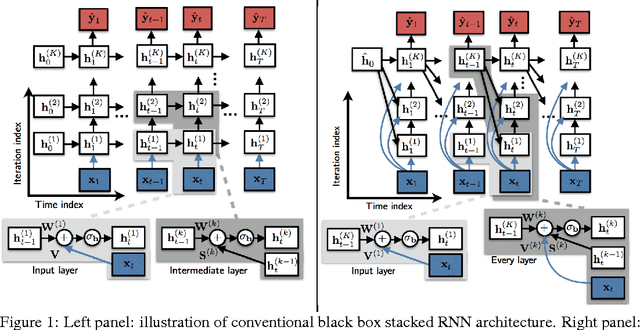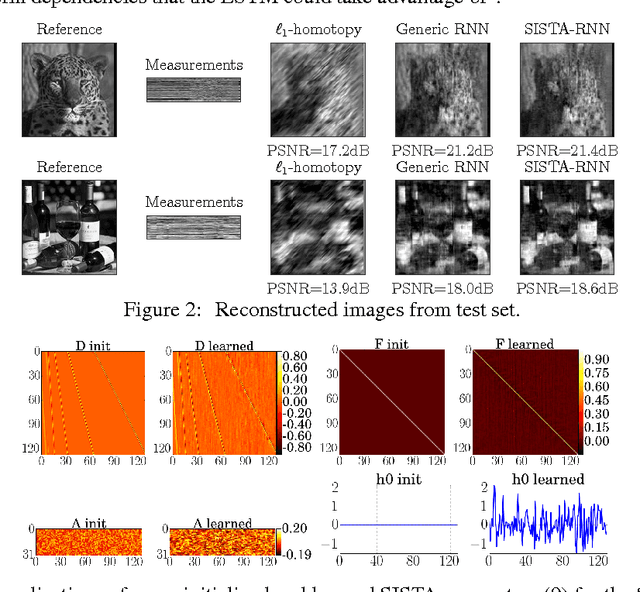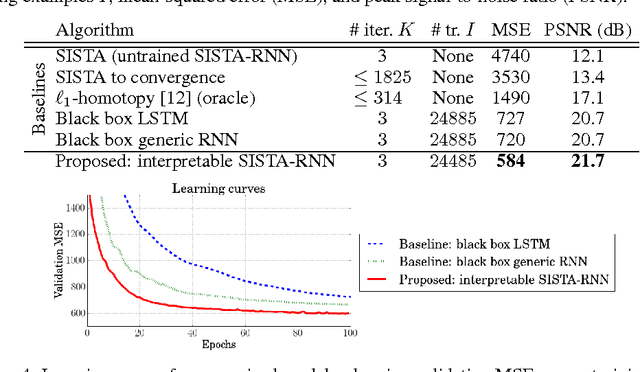Interpretable Recurrent Neural Networks Using Sequential Sparse Recovery
Paper and Code
Nov 22, 2016


Recurrent neural networks (RNNs) are powerful and effective for processing sequential data. However, RNNs are usually considered "black box" models whose internal structure and learned parameters are not interpretable. In this paper, we propose an interpretable RNN based on the sequential iterative soft-thresholding algorithm (SISTA) for solving the sequential sparse recovery problem, which models a sequence of correlated observations with a sequence of sparse latent vectors. The architecture of the resulting SISTA-RNN is implicitly defined by the computational structure of SISTA, which results in a novel stacked RNN architecture. Furthermore, the weights of the SISTA-RNN are perfectly interpretable as the parameters of a principled statistical model, which in this case include a sparsifying dictionary, iterative step size, and regularization parameters. In addition, on a particular sequential compressive sensing task, the SISTA-RNN trains faster and achieves better performance than conventional state-of-the-art black box RNNs, including long-short term memory (LSTM) RNNs.
 Add to Chrome
Add to Chrome Add to Firefox
Add to Firefox Add to Edge
Add to Edge